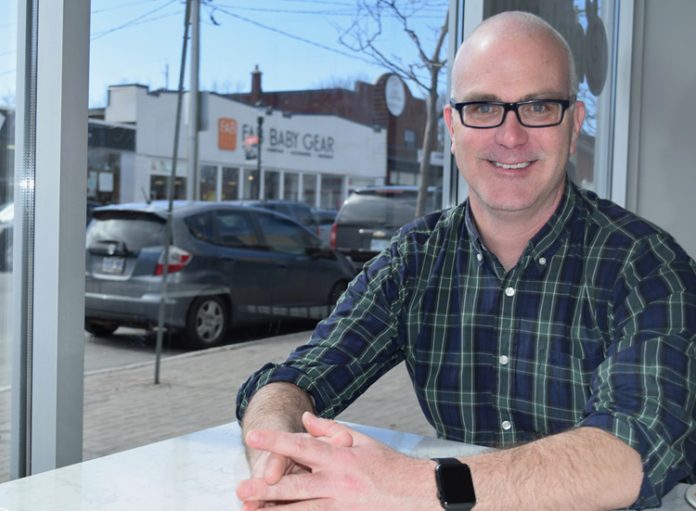Submitted by Jeff Leiper, Kitchissippi Ward Councillor
We’re fast approaching the dog days of summer, but I know those won’t last long. When council resumes this fall, we’ll have an extraordinarily important agenda to work through in the last quarter of the term.
Top-of-mind for everyone will be the new Official Plan (OP) that we expect to pass in the early autumn. The OP is a critical document that describes how Ottawa will grow to its projected population levels while respecting the principles for growth handed down by Queen’s Park to Ontario municipalities.
The OP will describe how the urban boundary is to be expanded to accommodate new residents, and where intensification is expected to occur to constrain that sprawl. It will describe where there will be tall, mid-rise, and low-rise buildings, and where commercial and industrial uses will be allowed. At a high level, it will describe how we expect people to travel from point A to point B in keeping with growth patterns and describe the principles for how the city will be economically and environmentally sustainable.
The OP is (largely) not a detailed document, and there is significant work to do to turn the high-level policies into zoning, spending and other focused plans. We’ll develop a Transportation Master Plan that will describe the projects and spending needed to accomplish the OP’s goals. The land-use planning principles will need to be implemented through a neighbourhood-by-neighbourhood review of the zoning bylaw to ensure those are in keeping with the OP.
We’ll need to develop greenspace, recreation, waste and infrastructure master plans. Those plans will propose lists of projects that will determine what development charges we’ll impose on new residential units. And, where spending is required from tax dollars, the OP will guide the city’s Long Range Financial Plan that will guide taxation and borrowing.
On paper, it’s all very elegant. Around the “horseshoe” it will be messy and controversial. The level of intensification needed to accommodate half of Ottawa’s population growth, and the urban boundary expansion needed to accommodate the other half, are fiercely opposed in many quarters. The shift to an emphasis on active and public transportation is a break with generations of post-WWII urban planning. There are big questions, particularly, for the implications of intensification for large swaths of suburban single-detached dwelling neighbourhoods near transit.
There are several outcomes I’m seeking from the process. First and foremost, I believe we need to constrain growth of the urban boundary (the “belt” around urbanized Ottawa beyond which development isn’t allowed). Sprawl is neither environmentally nor economically sustainable. I like to point out that the reason we’re paying a three per cent tax increase each year of this term of council instead of two per cent as in the last is because we have a large infrastructure maintenance deficit on which we have to catch up. That shortfall is the result of generations of planning sprawling, low-density communities that can’t financially support the maintenance of far-flung pipes and roads. Development charges pay for the building of that infrastructure, but its life-cycle costs fall on the taxpayer.
I’m also very cognizant of the need to focus intensification on transit. It takes 500 trees to offset the greenhouse gases emitted by a car driven the average number of kilometres in Canada. Affording people the opportunity to drastically reduce how far they have to drive is the single biggest contribution a municipal government can make to fighting climate change, and it’s accomplished through intensification.
At the same time, though, I also recognize that density brings with it challenges. In our core neighbourhoods, there is limited opportunity to increase, for example, recreational and greenspace amenities. The neighbourhoods that can be expected to be intensified most due to proximity to transit are those where land is the most expensive and opportunities to expand or build parks the most limited. Without a strong financial plan in place, I’m cynical that we can simply assume development charges will obviate those challenges.
It’s going to be a busy fall.
